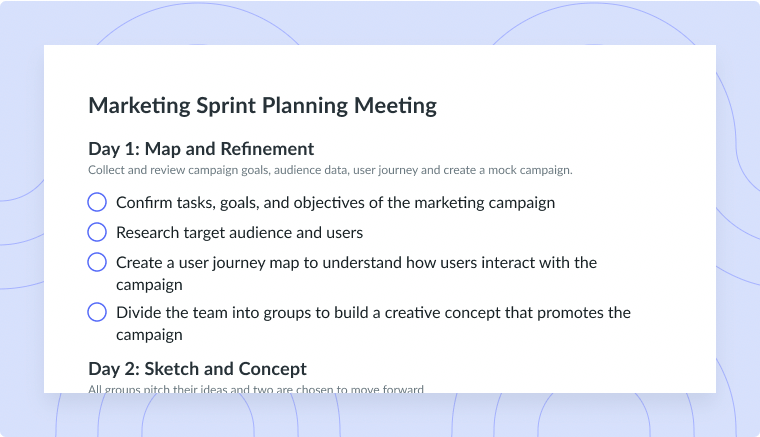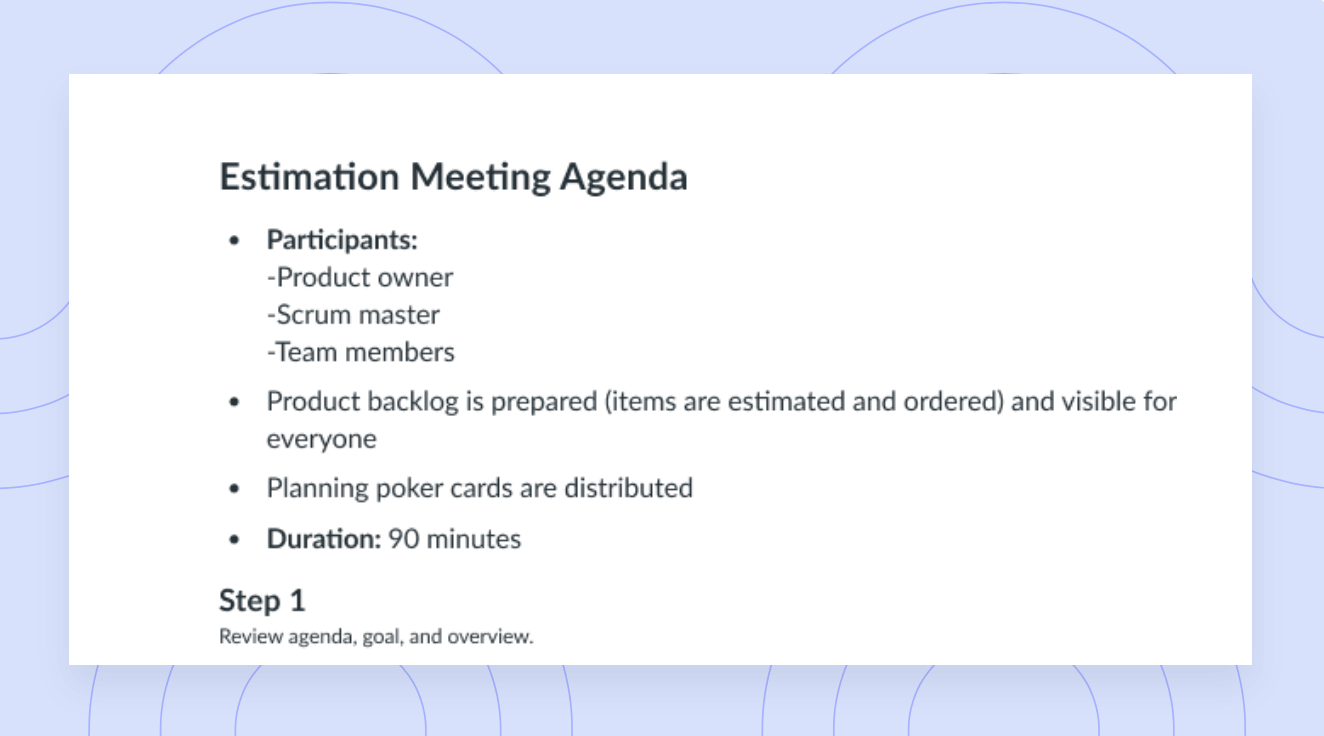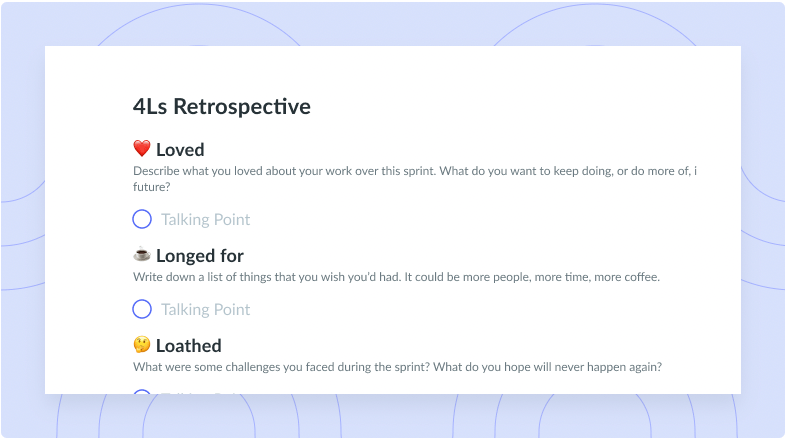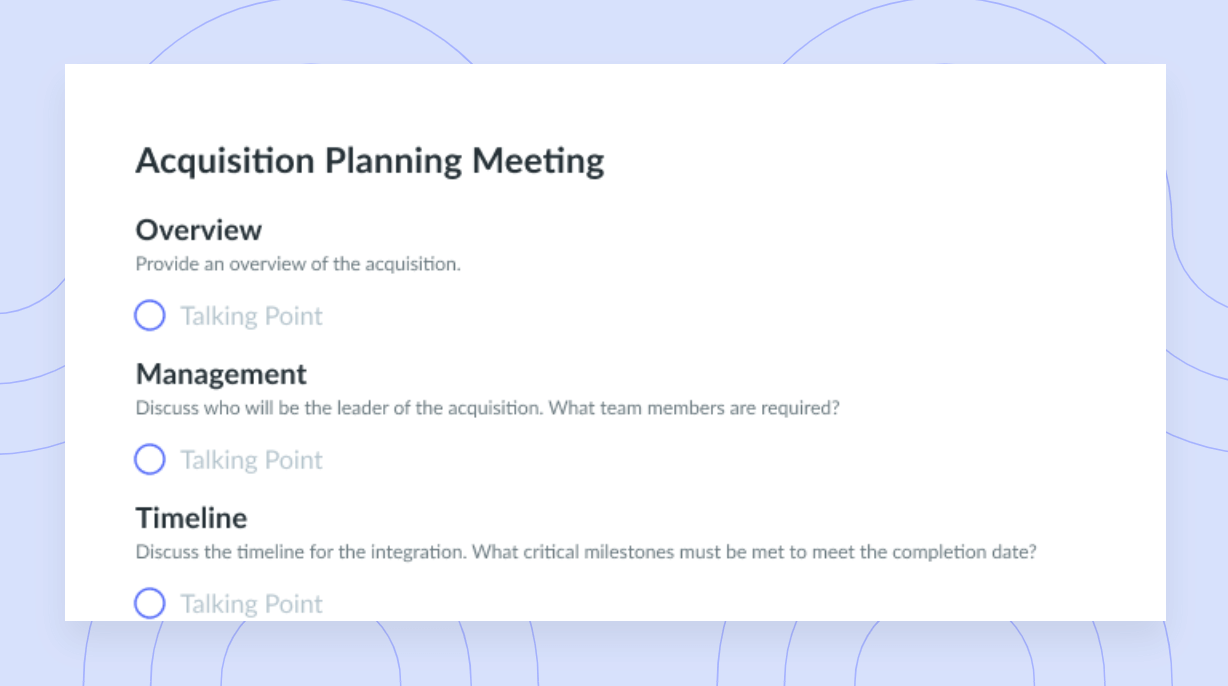Backlog Refinement: Challenges and Solutions
Master the art of backlog refinement to increase team alignment and improve your sprint planning.
When your to-do list is disorganized and cluttered, it’s easy to feel overwhelmed by an avalanche of tasks on your plate. It quickly becomes impossible to focus on your work; you might even feel paralyzed by indecision about what to tackle next. Taking some time to regularly review, organize, and prioritize your tasks is key for transforming your to-do list from an impossible feat into a productivity powerhouse.
If your team uses agile methodology, the same approach applies to your product backlog. Regularly spending time on backlog refinement will help your team prioritize your most essential work, provide maximum value to customers, and set your sprints up for success. Read on for a detailed guide on what backlog refinement entails, how to get started, and solutions to common challenges that can arise.
- What is backlog refinement?
- The backlog refinement process
- Common challenges and solutions for backlog refinement
- What is a backlog refinement meeting?
What is backlog refinement?
Backlog refinement, also known as backlog grooming, is a project management technique used in agile methodology. It describes the process of reviewing the items in your product backlog and prioritizing them based on their importance during a backlog refinement meeting. Backlog refinement should be done regularly, although the frequency depends on your team; some teams complete backlog refinement daily, weekly, or at sprint intervals.
Backlog refinement is an integral part of sprint planning because it ensures your team focuses on the highest-priority items during your sprint. Refining user stories, eliminating outdated stories, and adding new ones based on customer needs is an essential part of the refinement process and will help you prioritize your customers. Other benefits of backlog refinement include better collaboration, increased efficiency, and improved team alignment.

Say goodbye to cluttered backlogs
Transform your team meetings into productive conversations and master the art of organized action items with software like Fellow!

The backlog refinement process
1Prepare the backlog
Start by reviewing all of the items that are currently in your product backlog, including new features, bug fixes, design changes, technical debts, and other product improvements. Update any items that are out of date and remove those that are no longer necessary. If there are duplicate items, delete them or merge them with similar tasks. You may also have additional items to add based on new user feedback, changes in the market, or updated business requirements.
Each item in your backlog should have a detailed description of what it will achieve, as well as a user story that clearly describes the value it will provide to your customers. Estimate the approximate time to complete each item (typically measured by the number of working days) and make sure there’s enough information for your development team to clearly understand the task. You can color-code items in your project management software to help you keep track; for example, items that are prepared and ready for sprint planning can be colored green.
2Prioritize backlog items
Your team might have dozens or even hundreds of items in your product backlog, and prioritizing them effectively is key in agile methodology. It’s essential to dedicate enough time to this step in your backlog refinement agenda because it will make or break your sprint planning.
Here are some factors to consider when prioritizing backlog items:
- Customer value—consider which items are most valuable to your users
- Business value—identify items that will best help you reach your company goals
- Product strategy—prioritize items that align with the long-term vision for your product
- Dependencies—determine if there are items that may be dependent on other items being completed first
- Value vs. effort—start with items that provide the most value for the lowest amount of effort
If your team struggles to agree on which items should be prioritized, try using planning poker. Each meeting participant receives “poker cards” they can use to vote on an item’s priority level. If there’s disagreement, continue discussing the item until everyone shares the same vote. Fellow’s Objectives tool can also help you review your team’s goals and determine which backlog items are most essential to your overall progress.
3Break down large tasks
Next, review the size of your backlog items and look for any large items that need to be broken down into smaller tasks. Reducing tasks to a manageable size will ensure they can be completed within a single sprint. It will also help you set sprint schedules, accurately estimate project timelines, and reduce the risk of your sprint failing.
Story splitting is the process of breaking a single user story into smaller stories, and it can help you break down tasks in a way that provides the most value to your customers. Instead of splitting backlog items solely based on technical boundaries for your development team, make sure each item is still a complete user story and prioritizes your customers’ needs.
When you’re breaking down items during backlog refinement meetings, you can use Fellow’s action items to easily assign the new tasks to team members so nothing gets missed.
4Review and approval
The role of the product owner in backlog refinement is to ensure the updates to the backlog align with the overall product vision, company goals, and customer needs. The product owner should review the newly refined backlog to check that it’s well prepared, refined, and ready for implementation. Since backlog refinement is an ongoing process, you can incorporate feedback from the product owner to continuously improve your team’s refinement efforts.
Once the product owner has approved the refined backlog, communicate the updates to the product team, ensuring everyone understands the reasoning behind the changes. While it’s important to keep the whole team informed, you’ll want to avoid excess meetings about refinement and spending excess time on it. Limit your decision-making team to the product owner, core product team members, select representatives from customer-facing and development teams, and key stakeholders. We suggest keeping your backlog refinement meetings to one hour or less; using this time frame will motivate you to stay focused and keep the conversation on track.
Common challenges and solutions for backlog refinement
Here are some common challenges teams face in the refinement process and solutions to help you overcome them.
- Challenge 1: Overwhelming backlog
- Challenge 2: Difficulty in prioritization
- Challenge 3: Inaccurate estimation of effort
- Challenge 4: Resistance to change
Challenge 1: Overwhelming backlog
Symptoms:
- The backlog becomes too large, making it difficult to manage or prioritize effectively
- Backlog items are outdated, duplicated, or poorly defined
- Team members disregard the backlog or feel demotivated by the amount of items present
- Backlog items are frequently going undelivered or don’t align with business needs
Solutions:
- Regularly prune the backlog to remove or deprioritize outdated or irrelevant items
- Break down large items into smaller, more manageable tasks
- Prepare a backlog refinement agenda ahead of time and keep the meeting to one hour or less
- Remember that your backlog is not a to-do list—keep it to product updates and store everyday to-do’s in your task management software
Challenge 2: Difficulty in prioritization
Symptoms:
- Backlog refinement meetings run overtime because your team can’t agree on which items are most important
- Important tasks are accidentally deprioritized or forgotten
- Your team is spread too thin and their work is unfocused
- Dependencies aren’t taken into account, so items are completed out of order
Solutions:
- Prioritize quick-to-complete tasks or build out a specialized project team for specific, larger tasks
- Explain and clearly define user stories so you understand the customer value each item provides
- Use planning poker to help your team come to an agreement on each task’s priority level
- Use Fellow’s Objectives tool to review your objectives and key results (OKRs) and ensure backlog items are aligned
Challenge 3: Inaccurate estimation of effort
Symptoms:
- Projects are behind schedule and/or over budget
- Team members are working overtime and experiencing burnout
- Stakeholders are dissatisfied with delays or poor results
- Team morale decreases due to unrealistic expectations from management
Solutions:
- Invite at least one representative from your development team to your refinement meetings
- Break down large backlog items into manageable tasks so you accurately estimate how long they will take
- Start by completing smaller user stories that are easier to estimate before moving on to larger ones
- Work on improving performance over time to increase team efficiency
- Employ an iterative approach and regularly review your estimates, making updates as needed
Challenge 4: Resistance to change
Symptoms:
- Team members are skeptical of the backlog refinement process and changes made to backlog items
- Disagreement or lack of participation in backlog refinement meetings
- Resistance to backlog refinement and the incorporation of backlog updates during sprint planning
- Struggling to get support outside of the product team for the refinement process and results
Solutions:
- Limit your backlog refinement meetings to key attendees, including the product owner, development team, and representatives from other key teams (like sales and marketing)
- Explain to your team why the backlog changes will help you reach your OKRs and help you provide value to customers
- Include time for questions and discussion in your backlog refinement agenda
- Provide training in agile methodology and backlog refinement to increase buy-in from your team
- Encourage your team to use Fellow’s feedback tool to share their thoughts on an ongoing basis
What is a backlog refinement meeting?
Backlog refinement meetings are recurring meetings in which team members and the product owner discuss, break down, and prioritize items in the product backlog. They typically last 30-60 minutes and take place 1-3 days before the end of each sprint cycle. The goal of backlog refinement meetings is to ensure the backlog is populated with items that are relevant, detailed, and aligned with business objectives.
Fellow makes it easy for you to have productive, focused backlog refinement meetings with your product team. Preparation is key for successful backlog refinement, and sending out a collaborative agenda before your meeting will encourage everyone to review backlog items prior to your discussion. Shared meeting notes will help you record decisions made about backlog items and the reasons behind them so you can refer back during sprint planning. You can also use action items to assign tasks to project managers or development team members during the meeting so you’re prepared for your next sprint. Finally, an essential element of agile methodology is having a culture of regular feedback; you can use Fellow’s feedback tool to give and receive feedback from the product owner and product team members to improve your backlog refinement process.
Get started with our backlog refinement meeting template to help you improve your communication, prioritization, and decision making during backlog refinement.
Parting advice
Effective backlog refinement is essential for seamless collaboration, efficient sprint planning, and team alignment. Maintaining an organized backlog is one of the best ways to set your sprints up for success and make consistent progress. When refining your list, don’t forget to keep in mind the voice of your customers and your team’s OKRs to make sure you focus on what matters most. Finally, make sure to use Fellow for your next backlog refinement meeting to help drive engagement, focus, and decision making among your product team.


![Sprint Planning Meeting Guide [+ Free Template]](https://fellow.app/wp-content/uploads/2020/12/Sprint-Planning-Team.jpg)
![Understanding Planning Poker: 6 Steps [+ Free Template]](https://fellow.app/wp-content/uploads/2022/08/Planning-Poker-2.jpg)

![How to Run an Effective Sprint Planning Meeting [+ Free Template]](https://fellow.app/wp-content/uploads/2022/03/sprint-meeting.jpg)


![How to Create a Team Agreement [+3 Examples]](https://fellow.app/wp-content/uploads/2023/05/team-agreement2.jpg)



















